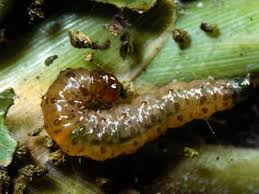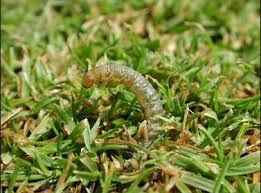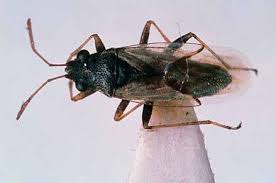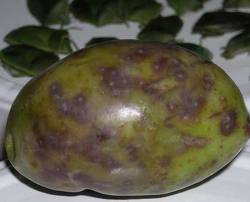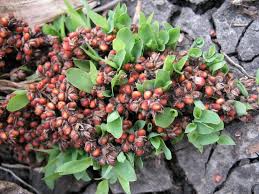Brown marmo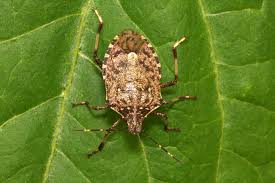 rated stink bug (BMSB), or simply the stink bug, is an insect in the family Pentatomidae, and it is native to China, Japan, and Taiwan. It was accidentally introduced into the United States, with the first specimen being collected in September 1998. The brown marmorated stink bug is considered to be an agricultural pest, and by 2010–11 had become a season-long pest in U.S. orchards.
rated stink bug (BMSB), or simply the stink bug, is an insect in the family Pentatomidae, and it is native to China, Japan, and Taiwan. It was accidentally introduced into the United States, with the first specimen being collected in September 1998. The brown marmorated stink bug is considered to be an agricultural pest, and by 2010–11 had become a season-long pest in U.S. orchards.
According to North Dakota State University, there are 4,700 species of stink bugs in the world, with about 250 in the U.S. and Canada. It is known as the brown marmorated stink bug (Halyomorpha halys) as it gets its name from the brown marbling pattern on its back.
Brown marmorated stink bug are sporadic pests of most deciduous tree fruits and can occasionally cause severe damage. The name stink bug comes from the insects’ habit of exuding a fluid, which has a strong and usually disagreeable odor, from glands between the legs.
The brown m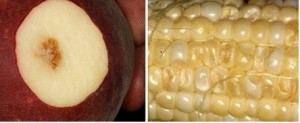 armorated stink bug is an agricultural pest that can cause widespread damage to fruit and vegetable crops. In Japan it is a pest to soyabean and fruit crops. In the U.S., the brown marmorated stink bug feeds, beginning in late May or early June, on a wide range of fruits, vegetables, and other host plants including peaches, apples, green beans, soybeans, cherries, raspberries, and pears. It is a sucking insect, a “true bug“that uses its proboscis to pierce the host plant in order to feed.
armorated stink bug is an agricultural pest that can cause widespread damage to fruit and vegetable crops. In Japan it is a pest to soyabean and fruit crops. In the U.S., the brown marmorated stink bug feeds, beginning in late May or early June, on a wide range of fruits, vegetables, and other host plants including peaches, apples, green beans, soybeans, cherries, raspberries, and pears. It is a sucking insect, a “true bug“that uses its proboscis to pierce the host plant in order to feed.
This insect is becoming an important agricultural pest in Pennsylvania. In 2010, it produced severe losses in some apple and peach orchards by damaging peaches and apples. It also has been found feeding on blackberry, sweet corn, field corn and soyabeans. In neighboring states, it has been observed damaging tomatoes, lima beans, and green peppers.
These insects can produce allergic reactions in some individuals who are sensitive to the bugs’ odor (an aeroallergen). These chemicals are produced by dorsal scent glands. Individuals sensitive to the odors of cockroaches and lady beetles are also affected by the stink bug. Additionally, if the insects are crushed or smashed against exposed skin they have been reported to produce dermatitis at the point of contact. This is particularly important regarding agricultural workers picking fruits and vegetables.
In agriculture, stink bugs have been more of a problem in the Mid-Atlantic States like Delaware, Maryland, and Virginia. The U.S. Apple Association estimated that stink bugs caused $37 million in damage to apple growers in Maryland, Pennsylvania, Virginia and West Virginia in 2010.They have also been a real headache for home gardeners in these states.
The article below would better explain the damage caused by these insects.

Farmers worry about harvest as stink bugs make a mess in NW region
Originally published June 22, 2015 at 8:50 pm Updated June 24, 2015 at 3:39 pm
By Hal Bernton – Seattle Times staff reporter
VANCOUVER, Wash. — on a hot June day, Joe Beaudoin ducked into the shade of his orchard to check for peaches with shallow dimples — the telltale signs left by the brown marmorated stink bug.
This invader from Asia has a formidable appetite for the berries, tree fruits and vegetables that Beaudoin grows on his 80-acre farm.
This spring, even before the trees sprouted all their leaves, the bug already had begun to pierce the tiny peaches to suck out juice.
“This is our third year finding them,” Beaudoin said. “But I have never seen the damage so early.”
Beaudoin expects more crop losses in what is shaping up to be a big year for the stink bugs.
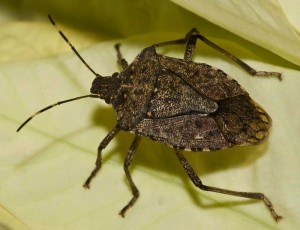 The same mild temperatures that sabotaged the region’s snowpack were a boon to these bugs, reducing their mortality during the coldest months and generating plenty of early spring bounty for forage and as climate change unfolds in an increasingly interconnected world, the warmer weather forecast for the decades ahead could make the Northwest a more welcoming region for some of the pests that arrive from elsewhere.
The same mild temperatures that sabotaged the region’s snowpack were a boon to these bugs, reducing their mortality during the coldest months and generating plenty of early spring bounty for forage and as climate change unfolds in an increasingly interconnected world, the warmer weather forecast for the decades ahead could make the Northwest a more welcoming region for some of the pests that arrive from elsewhere.
The stink bugs get their name from the scent they release, which some describe as akin to a musky cilantro. They are well-entrenched in the Portland-Vancouver area, and — to a lesser extent — in Seattle. In both cities, some urban homeowners have been beset by infestations as the bugs find indoor spaces to overwinter.
These insects have also spread south through the Willamette Valley, where Oregon State University researchers have purposefully mixed in the stink bugs with the grape crush to try to figure out how many insects it takes to mess with the taste of the region’s fabled Pinot Noir.
“We should be able to keep them out of the wine, but even if they get in, we’re looking at some processing steps so that you can get rid of the flavor,” said Elizabeth Tomasino, an Oregon State University researcher.
So far, in the orchard country of Central Washington, only a few stink bugs have been found in nearby residential areas, and there are still plenty of questions about how well they can adapt to such an arid area.
But these farmers are on alert.
Spurred by the government phase out of some insecticides, they have under taken a major effort to develop alternative pest controls. If the population booms in their orchards, they would likely dramatically step up their spraying.
The weird warm weather has also boosted the populations of another recent Asian invader: a tiny fly called the spotted winged drosophila that lays its eggs in the fruit of cherries, berries and other crops. This year, Beaudoin says he had to spray his strawberries, marionberries and blackberries once a week to keep these fruit flies at bay.
The stink bugs attack a broader range of crops — including the apples that are Washington’s most valuable harvest.
Hurting harvests
The brown marmorated stink bugs grow to less than an inch long and are shaped like a shield.
They can be differentiated from native U.S. stink bugs, which have not been a big pest problem, by two white bands on their antennae.
These insects have a complicated life cycle, living for up to a year and evolving through five different stages before adulthood, when their wings enable them to cover many miles in search of food. In the Northwest, they typically produce one generation per year, but due to the warm weather this year, they may produce two.
Their destructive power was amply demonstrated in Pennlysvania, which was where the bug was first detected in the United States back in 1998. Over time, their numbers grew, and in 2010 the bug contributed to severe losses in apple orchards, scarring the fruit with so many blemishes that some acreage was not worth harvesting.
Homeowners also have had creepy experiences with the stink bugs, with some in eastern states reporting thousands infesting their residences.
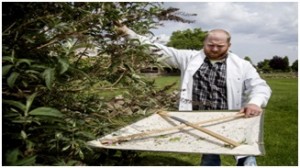 Beaudoin’s farm location — within the Vancouver urban boundaries and close to residential subdivisions where stink bugs overwinter — makes his acreage particularly vulnerable to attacks. And during the past three years, his operations have evolved into a kind of field laboratory for the study of the insect’s Northwest behavior.
Beaudoin’s farm location — within the Vancouver urban boundaries and close to residential subdivisions where stink bugs overwinter — makes his acreage particularly vulnerable to attacks. And during the past three years, his operations have evolved into a kind of field laboratory for the study of the insect’s Northwest behavior.
Beaudoin was surprised to find, at least in his orchards, the bugs appeared to show a decided preference for Russet and Granny Smith apples but left more than a dozen other varieties untouched. He lost several rows of one variety of peaches, but not others. And 90 percent of his French pumpkins were lost to the stink bugs, which penetrated from the ground,
Researchers are scrambling to figure out not only what are the most effective insecticides to use on the stink bugs, but also when best to apply them. So far, for Beaudoin, that’s still uncertain.
“This is all new. For timing, it’s just going to be a guess,” Beaudoin said.
Tastes like … bugs
As the bugs spread from the Portland area in search of food, the vineyards of Western Oregon represent close-by targets. So far, they have not shown up on grapes in sufficient quantities to pose a problem for winemaking, according to Tomasino, the OSU researcher. If they did, blowers used during sorting could hopefully keep them out of the crush.
 But with so much at stake, OSU researchers decided to figure out how many stink bugs it would take to taint the wine, and what consumers thought of that product.
But with so much at stake, OSU researchers decided to figure out how many stink bugs it would take to taint the wine, and what consumers thought of that product.
They made wine in 2012, 2013 and 2014, then served it up after a year of aging in blind taste tests with untainted vintage. (All the wine fell well within the Food and Drug Administration thresholds for insect levels in the crush, according to Tomasino.)
The researchers concluded that the recipe for a decidedly stink-bug flavored Pinot was three and a half insects per cluster of grapes, which is well above the levels found to date in the vineyards.
About 10 percent of those who blind tasted the stink- bug wine didn’t mind the flavor.
Others who sampled the wine either disliked or strongly disliked the stink- bug taint.
“It does two different things,” Tomasino said. “It masks a little bit of the fruitiness, and then in your mouth the main compound from stink bugs is cilantro, and of course that’s not something you would associate with a high-quality wine.
Hopes for a treatment
The stink bug could potentially wreak the most damage in Washington east of the mountains, where many high-value crops are grown with irrigation.
Even amid this desert agriculture, invasive species can sometimes take hold. In the orchards of the Yakima basin, farmers have long battled the codling moth of West Asian origin.
To fend off the codling moth, farmers for years repeatedly sprayed apples with azinphos-methyl, an organophosphate pesticide derived from World War II-era nerve agents.
Brown marmorated stink bugs crawl on a peach in Allentown,… (Peter Shearer / Oregon State University)
The chemical was phased out of the orchards in 2012 by the Environmental Protection Agency.
Today, most apple growers get much of their control by a gentle alternative. They hang small wire dispensers in the trees that flood the orchards with pheromones and disrupt the moth’s mating cycle. This approach also enables more beneficial insects to build up in the orchards and help keep other pests under control.
“It’s been a major success but it’s been a long, long road to figure out how to manipulate those moths to keep them from finding each other,” said Peter Landolt, a U.S. Department of Agriculture entomologist based in Wapato.
There’s no similar treatment for stink bugs.
Instead, with azinphos-methyl now off-limits, farms in areas with stink bugs have turned to other compounds — such as pyrethroids — that kill a wide range of insects. Then, with the beneficial insects knocked back, they sometimes have to turn to additional sprays to treat other pests that move in.
“We’re afraid of what will happen if they get here,” said Jim Doorink, an apple grower in the Yakima Basin. “The products we use against it are broad spectrum and indiscriminate.”
Researchers are hoping to come up with alternative treatments, such as introducing natural predators that can feed on the stink bugs, or finding some way to attract masses of the bugs to a lethal trap.
At the Wapato research station, stink bugs dwell in a plexiglass cage. Chemist Lee Ream picks one up with tweezers and tickles its belly so the stressed-out bug emits a pungent aroma.
The scent has undergone detailed analysis, but researchers still have a long way to go to figure out the stink bugs.
Some, such as Landolt, are hopeful that the lack of water and climate extremes of the desert climate will limit the bugs’ populations.
Doorink, as he gazes out from his hilltop house on thousands of verdant irrigated acreage, is less optimistic.
“I think all the (dry climate) is going to do is affect how quickly they can get established here,” he said. “There are plenty of places out there for them.”
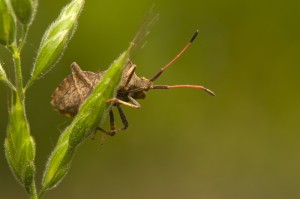 Management options for this invasive insect are currently limited. Agricultural setting management relies on chemical control. Brown marmorated stink bug is susceptible to several widely used insecticides but they are ecologically harmful to both target and non-target species. Leaching of these insecticides in the ground causes soil pollution and also reduces the fertility of the soil.
Management options for this invasive insect are currently limited. Agricultural setting management relies on chemical control. Brown marmorated stink bug is susceptible to several widely used insecticides but they are ecologically harmful to both target and non-target species. Leaching of these insecticides in the ground causes soil pollution and also reduces the fertility of the soil.
C Tech Corporation, an Indian based company has come up with a novel solution to deal with such problems. Termirepel™ is an aversive for termites and insects. It has unique qualities which range from being non-toxic and non-hazardous to being “ECO-FRIENDLY”. Aggressive species are further deterred from attacking by advanced mechanisms like aversion, feeding deterrents, mating disruption, reproduction cycle inhibition, growth impairment and chemo sterilization thus modifying their response towards the Termirepel™ containing products resulting in them staying away from the application. Thus, Termirepel™ actually helps in modifying insect behavior. It does not harm or kill the insect but just repels them away from the application.
 Termites though extremely small and tiny creatures have managed to stir us humans into noticing them and acknowledging their existence. The primary reason is the tune of damage they cause which has a direct impact on the economy of the country and thus the humans. Termites attack in groups and feed on any form of cellulose especially wood. This little bit of trivia makes us realize that almost everything around us is susceptible to a termite attack. Termites always seek for moisture filled places and therefore basements and the space under wooden boards are their favorable infestation places. Termite damage often looks similar to water damage. Outward signs of termite damage include buckling wood, swollen floor sand ceilings, areas that appear to be suffering from slight water damage and visible mazes within walls or furniture. Termite infestations also can exude a scent similar to mildew or mold. Dry wood termite infestations may only become apparent after a colony has burrowed so deeply into an infested item that the veneer cracks and the maze-like tunnels beneath become visible. Such damage is common in antique furniture pieces.
Termites though extremely small and tiny creatures have managed to stir us humans into noticing them and acknowledging their existence. The primary reason is the tune of damage they cause which has a direct impact on the economy of the country and thus the humans. Termites attack in groups and feed on any form of cellulose especially wood. This little bit of trivia makes us realize that almost everything around us is susceptible to a termite attack. Termites always seek for moisture filled places and therefore basements and the space under wooden boards are their favorable infestation places. Termite damage often looks similar to water damage. Outward signs of termite damage include buckling wood, swollen floor sand ceilings, areas that appear to be suffering from slight water damage and visible mazes within walls or furniture. Termite infestations also can exude a scent similar to mildew or mold. Dry wood termite infestations may only become apparent after a colony has burrowed so deeply into an infested item that the veneer cracks and the maze-like tunnels beneath become visible. Such damage is common in antique furniture pieces. One can only imagine how much damage these insects can inflict on our ever powerful judicial system. Sure we can punish human criminals but what about these little criminals??
One can only imagine how much damage these insects can inflict on our ever powerful judicial system. Sure we can punish human criminals but what about these little criminals??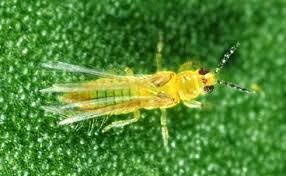 animals by puncturing them and sucking up the contents. Some species of thrips feed on other insects or mites and are considered beneficial, while some feed on fungal spores or pollen. More than 6,000 species of thrips are known around the world, with over 300 of these in Europe and only around 150 natives to Britain. Thrips are small hemimetabolic insects with a distinctive cigar-shaped bauplan. They are elongated with transversely constricted bodies. They range in size from 0.5 to 14 millimeters (0.020 to 0.551 in) in length for the larger predatory thrips, but most thrips are about 1 mm in length.
animals by puncturing them and sucking up the contents. Some species of thrips feed on other insects or mites and are considered beneficial, while some feed on fungal spores or pollen. More than 6,000 species of thrips are known around the world, with over 300 of these in Europe and only around 150 natives to Britain. Thrips are small hemimetabolic insects with a distinctive cigar-shaped bauplan. They are elongated with transversely constricted bodies. They range in size from 0.5 to 14 millimeters (0.020 to 0.551 in) in length for the larger predatory thrips, but most thrips are about 1 mm in length.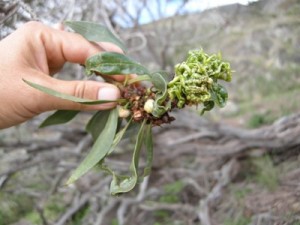
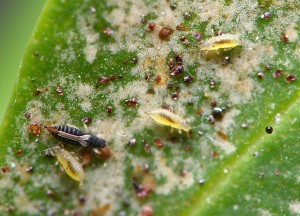
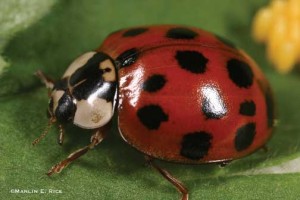
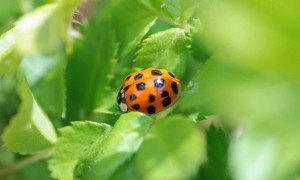
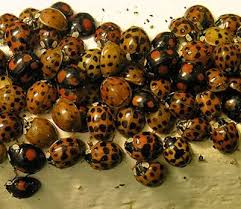

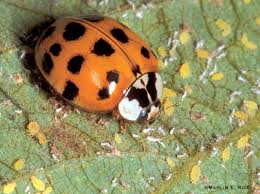






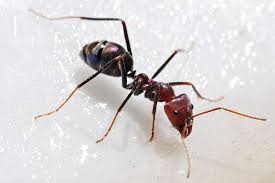
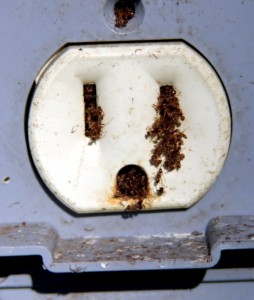

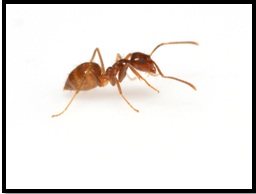

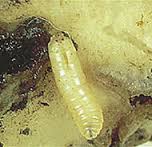
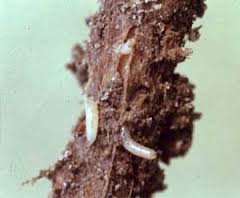

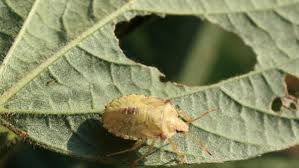

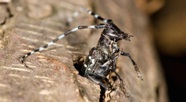
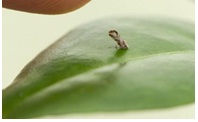
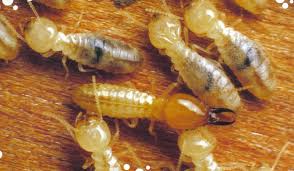



 our precious plants. The good news is that there are some simple and sustainable solutions to get rid of the problem without using dangerous pesticides.
our precious plants. The good news is that there are some simple and sustainable solutions to get rid of the problem without using dangerous pesticides.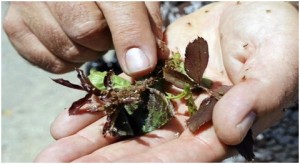
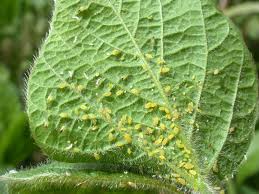
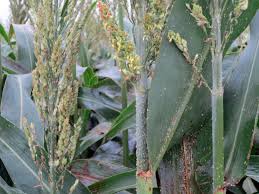
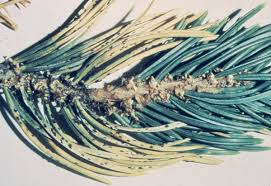





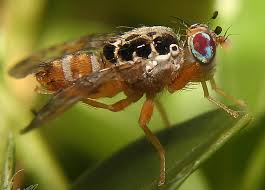
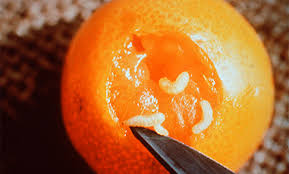

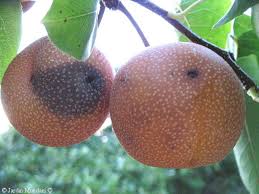
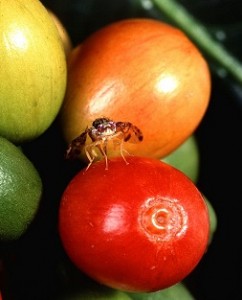
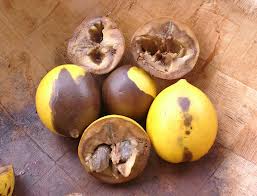

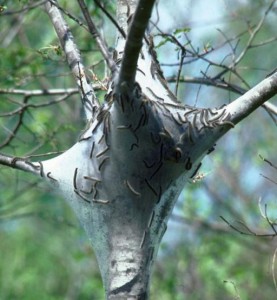
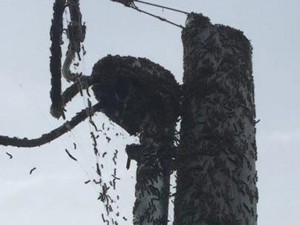
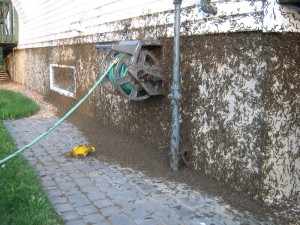

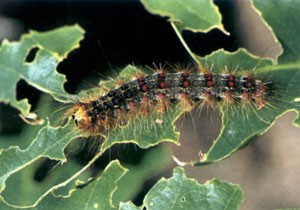
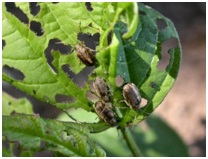
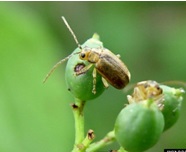 escence) on the foliage that includes Viburnum opulus, EuroV. dentatum, arrowwood viburnum, and V. trilobum , American cranberrybush viburnum. This pest will also feed on V. lantana , wayferingtree viburnum, V. rafinesquianum , Rafinisque viburnum,V. acerifolium , mapleleaf viburnum, V. lentago , nannyberry viburnum, and V. sargentii , Sargent viburnum. Thus, many of the viburnums affected are species native to the United States.
escence) on the foliage that includes Viburnum opulus, EuroV. dentatum, arrowwood viburnum, and V. trilobum , American cranberrybush viburnum. This pest will also feed on V. lantana , wayferingtree viburnum, V. rafinesquianum , Rafinisque viburnum,V. acerifolium , mapleleaf viburnum, V. lentago , nannyberry viburnum, and V. sargentii , Sargent viburnum. Thus, many of the viburnums affected are species native to the United States.
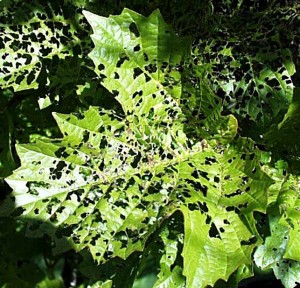
 rated stink bug (BMSB), or simply the stink bug, is an insect in the family Pentatomidae, and it is native to China, Japan, and Taiwan. It was accidentally introduced into the United States, with the first specimen being collected in September 1998. The brown marmorated stink bug is considered to be an agricultural pest, and by 2010–11 had become a season-long pest in U.S. orchards.
rated stink bug (BMSB), or simply the stink bug, is an insect in the family Pentatomidae, and it is native to China, Japan, and Taiwan. It was accidentally introduced into the United States, with the first specimen being collected in September 1998. The brown marmorated stink bug is considered to be an agricultural pest, and by 2010–11 had become a season-long pest in U.S. orchards. armorated stink bug is an agricultural pest that can cause widespread damage to fruit and vegetable crops. In Japan it is a pest to soyabean and fruit crops. In the U.S., the brown marmorated stink bug feeds, beginning in late May or early June, on a wide range of fruits, vegetables, and other host plants including peaches, apples, green beans, soybeans, cherries, raspberries, and pears. It is a sucking insect, a “true bug“that uses its proboscis to pierce the host plant in order to feed.
armorated stink bug is an agricultural pest that can cause widespread damage to fruit and vegetable crops. In Japan it is a pest to soyabean and fruit crops. In the U.S., the brown marmorated stink bug feeds, beginning in late May or early June, on a wide range of fruits, vegetables, and other host plants including peaches, apples, green beans, soybeans, cherries, raspberries, and pears. It is a sucking insect, a “true bug“that uses its proboscis to pierce the host plant in order to feed.




